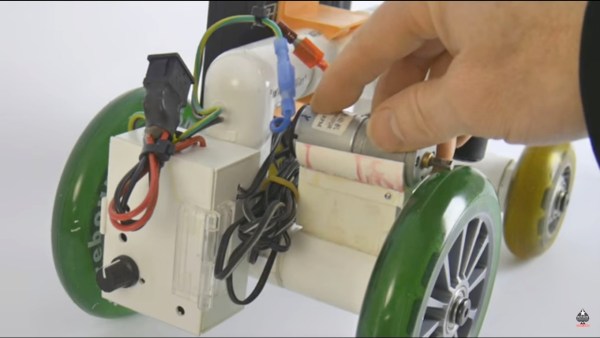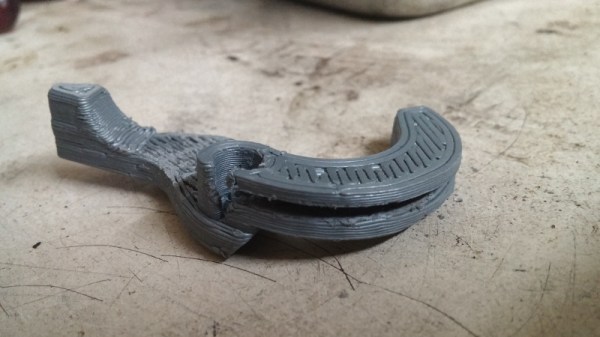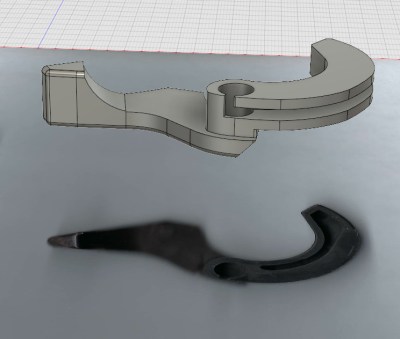[Eric Strebel] uses a small homemade vehicle with his camera mounted on it to get great tracking shots for the intros to his videos. If the movement is slow enough then the effect is quite professional looking. But he wanted it eight times slower. We not only like the simple way he did it, along with how he machined parts for it, but the result makes it look like a hot rod, hence his name for it, the dolly hot rod. He also has an elegant mechanism for disengaging the motor while he repositions the dolly.

The are many ways to slow down a rotation. We’re assuming he was already at the minimum speed for the vehicle’s 8 RPM motor transmission and electronic speed controller. Gears or pulleys would probably be the next options. But [Eric] went even simpler, switching from roller blade wheels to larger diameter scooter wheels.
As simple as that sounds though, it led to that age-old conundrum, how to attach the wheels to the vehicle. The axle is made up of PVC tubes. So he machined square the ends of some PVC plugs and bolted the plugs to the wheel bearings. That left only to push the PVC plugs into the axle’s tubes. There are a number of ways he could have machined the PVC plugs, and the full explanation of the one he chose is best left to his video below. But basically, it involved first machining a Bondo body filler cylinder with a bolt embedded in it and then using the cylinder to hold onto the PVC plug while he machined that.




















